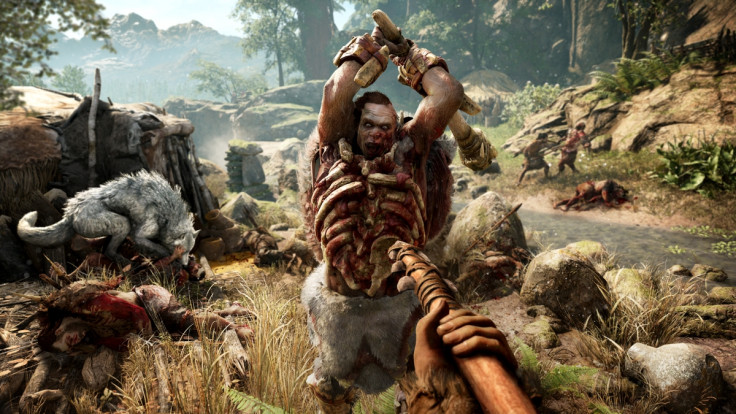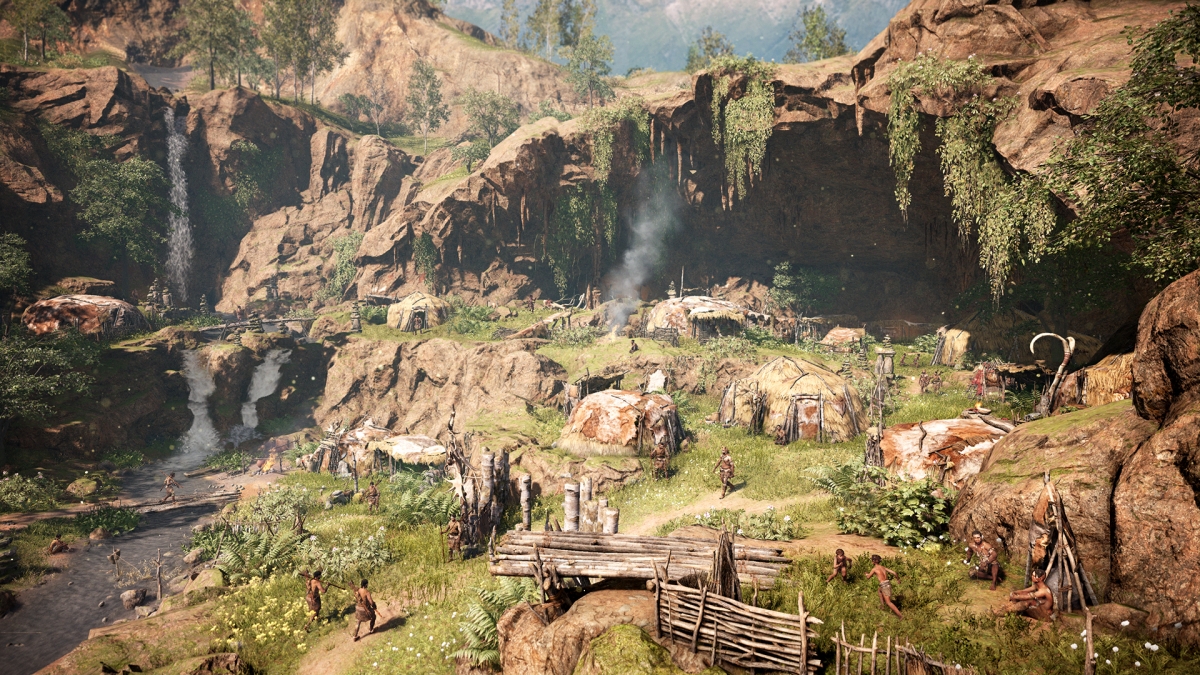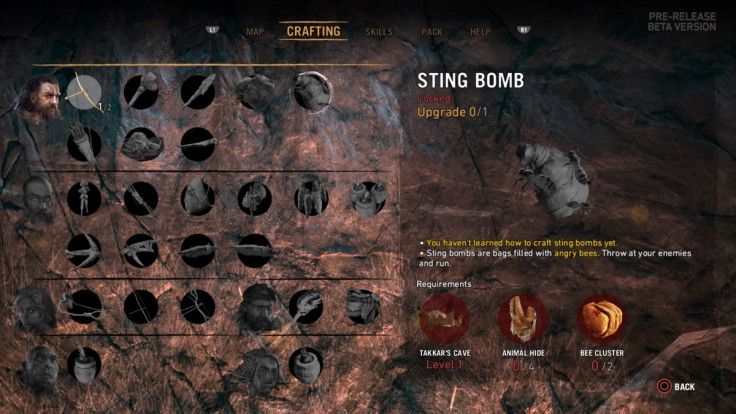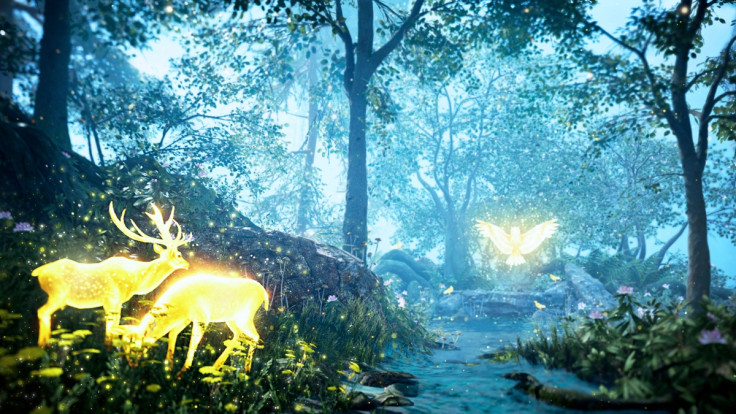Far Cry Primal preview: Ubisoft sequel heads back to the age of spears, tribal warfare and... bee bombs?
No major video game series has ever taken away so much of what made it a success

Far Cry Primal is not the game any of us expected to follow 2014's fourquel. Its announcement left fans with numerous questions: Would it be a downloadable game? Why isn't this a dinosaur game? It can't REALLY be stripping back that much of what made the last two games worked, can it? Having spent three hours with Ubisoft's latest wildlife-bothering first-person adventure, I can answer those questions as so: it's a full release, grow up and, well...
Primal is a big risk if nothing else. No major video game series has ever taken away so much of what made it a success. There are no guns, rocket launchers, vehicles or monologuing psychopaths. Instead, you play a Stone Age tribesman called Takkar, who, armed mostly with spears and arrows, fights man and beast at a time when humankind occupied the food chain's Europa League spots.
It's like Halo without the Warthog, Grand Theft Auto without the blunt satire, Call Of Duty without the gun fetishism. Okay, maybe not quite that extreme, Primal still feels like Far Cry – but that's also where the problem lies.
It begins with a sequence reminiscent of Modern Warfare's All Ghillied Up mission. Takkar follows an elder tribesman, keeping low as to not rouse the surrounding herd of mammoths. Creeping along, we spot a smaller mammoth we're able to seclude. Fellow tribesmen on a ridge help do so with a bit of fire and after a few dozen spears, we bring the infant down, only for a sabre-toothed tiger to attack and send us crashing down a cliff side.



After a title card, the tutorial continues as Takkar gathers resources to build weapons and a fire. Yep, there's crafting aplenty here, and it really only amounts to "go up to the thing and hold down a button" then "go to a menu and press another button to craft the thing". It's plain, unengaging and the basis of the entire game.
Combat is where things pick up. Players will primarily use spears, clubs and a bow and arrow throughout the game, and there's room here to become a master marksman. Hunting deer early on in the game means keeping low and quiet, lining up a headshot and hoping it hits. Hit the body and the deer will bolt, leading a chase that'll typically end with the animal's body having succumbed to its injuries.
Combat against larger animals by comparison is frantic and quite intense. It also inverts the balance in previous games between man (or more accurately, the player) and nature. In Far Cry 3 and 4, animals pose a threat, but with an AK-47 or a rocket launcher at their side, players always feel relatively safe. Panic only really enters the equation when a rhino enters stage left, straight into the side of your car, sending you flying into a ravine.
When you embark into the world proper, with the goal of uniting the Wenja tribe, there's a sense of being a much smaller part of the world than players have been in previous Far Cry games. From what we saw, the mission variety was limited to "kill this" or "escort that" but there was some fun to be had in just exploring the gorgeous environment, which has depth, variety and the same sense of authenticity that Far Crys 2-4 had.

Ubisoft deserves credit for attempting something different; for stripping Far Cry down to something like its bare essentials. Which is why the angry bee grenade is so disappointing. Yes, the angry bee grenade.
I scoured the menus for an idea of the game's progression system, which is basically the same as in past games. You earn experience to spend on unlocking abilities and weapons, which can also be upgraded by tribesmen and women in the settlement you help foster. It was in looking at the weapon screen that I noticed the "Sting Bomb"... and also a grapple hook.
This where the problem lay for me during my brief time with the game. The map looks huge (with plentiful fast travel points in lieu of vehicles) and there's something fun and somewhat unique about the set-up – a slightly diluted taste of Blood Dragon's individuality – but the reliance on well-worn tropes held it back.
For example why is there a mini map? When the player wounds a deer they are trying to kill and it runs off, chasing it should be fun, but you quickly notice a small cross appears on the map wherever the deer drops. There's also a measure of the mystical introduced early on, as Takkar encounters a shaman-type character and then DRINKS RAT BLOOD ON COMMAND FOR NO GOOD REASON.

This triggers a vision sequence (left) which eventually makes Takkar the "Beastmaster" and grants him the ability to use an owl as a UAV drone to survey and tag enemies. Yep.
Stuff like this led my time with Far Cry Primal to draw more sighs than the South Korean music chart (that joke probably works better spoken, but whatever).
I'm not crying out for realism here. Throwing knives (actually sharpened flint), a fire bomb and taming bears to fight alongside you – that stuff just about stretches things far enough – but owl UAVs, grappling hooks, bee bombs and a marker-filled mini-map just speaks of a company once again playing things just a little too safe despite generating good ideas.
There's every possibility that the full game will turn these complaints into minor quarrels, but after three hours with Far Cry Primal, I was already feeling like I'd seen all it had to offer – and none of it matches the ambition of the game's mission statement.
Far Cry Primal is set for release on PS4, Xbox One and PC on 23 February.
For all the latest video game news follow us on Twitter @IBTGamesUK.
© Copyright IBTimes 2025. All rights reserved.






















